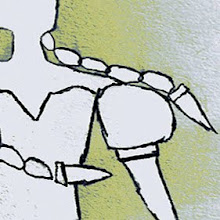– Georgia O'Keeffe
Name: Georgia Totto O'Keeffe (1887-1986)
Field: painting
Nationality: American
Art Movement: Precisionism
School or Group: Stieglitz group
« She revolutionized the tradition of flower painting in the 1920s by making large-format paintings of enlarged blossoms, presenting them close up as if seen through a magnifying lens.» (Wikipedia)
Georgia O'Keeffe's white flowers, HUGE oil paintings
Georgia O'Keeffe: A Portrait - Photo by Alfred Stieglitz
« O'Keeffe turned to working more representationally in the 1920s in an effort to move her critics away from Freudian interpretations. Her earlier work had been mostly abstract, but works such as Black Iris III (1926) evoke a veiled representation of female genitalia while also accurately depicting the center of an iris. Moreover, the centers of flowers are androgynous and can hardly be understood exclusively as feminine.»
« O'Keeffe consistently denied the validity of Freudian interpretations of her art. Although 1970s feminists celebrated O'Keeffe as the originator of female iconography, O'Keeffe rejected their celebration of her work and refused to cooperate with any of their projects.»
« What they were saying sounded too much to her like what the men had written about it in the 1910s and 1920s and overlooked the larger issue: that her paintings reveal vital parallels between animate and highly sensual forces in nature and humans.» (Wikipedia)
I truly understand and agree with her position: artists are not necessarily here to dictate what kind of political citizen we should be; they are meant to introduce us to the golden hive of the invisible.
We are the bees of the invisible. We wildly collect the honey of the visible, to store it in the great golden hive of the invisible.
– Rainer Maria Rilke
Black Iris III (1926)













